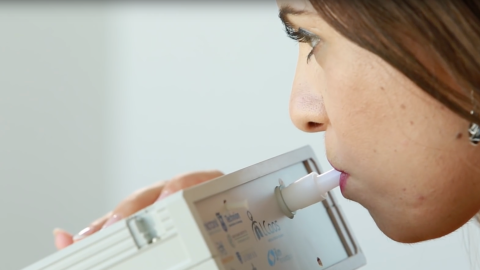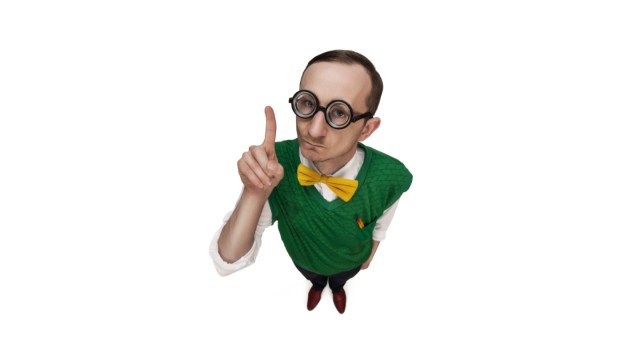Scientists Invent a Device That Can Detect 17 Diseases From Your Breath, Including Cancers

Scientists have created a device straight out of Star Trek that can detect 17 diseases, including 8 different types of cancer, just from your breath. The tricorder-like Na-nose can spot chemical signatures of the diseases and it’s hoped it will revolutionize treatment of many dangerous illnesses by spreading convenient early-detection technology. The international team of researchers from 5 countries, led by Professor Hassam Haick of the Technion-Israel Institute of Technology, is next developing Sniffphone for disease detection right through your smartphone.
The Na-nose device features a sensor nano-array of carbon nanotubes and tiny gold particles controlled by AI software. This program can analyze human breath samples for special chemical signatures that correspond to various diseases. This works because people exhale over a 100 unique chemicals called volatile organic compounds (VOCs) and the team proved that each disease has a very specific chemical signature within a person’s VOC. The scientists used mass spectrometry to figure out a 13-component “breathprint” for each of the 17 diseases in the study.
“We found that just as we each have a unique fingerprint, each of the diseases we studied has an unique breath print, a ‘signature’ of chemical components,” said Professor Haick. “We have a device which can discriminate between them, which is elegant and affordable.”
Why is breath particularly convenient for diagnosis?
“Breath is an excellent raw material for diagnosis,” Professor Haick told Haaretz. “It is available without the need for invasive and unpleasant procedures, it’s not dangerous, and you can sample it again and again if necessary.”
Besides cancers, the conditions the device can diagnose include Parkinson’s, multiple sclerosis. Crohn’s disease and kidney disease. The Na-nose was tested on 2,800 breath samples from 1,404 people in the U.S., Israel, France, Latvia and China and was able to correctly diagnose in almost 9 out 10 cases.
It’s the first time a device was created that can distinguish between different diseases in a breath sample. Artificial intelligence plays a large role in that. Professor Haick, a nanotechnology expert, explained its workings this way to Smithsonian.com:
“We can teach the system that a breathprint could be associated with a particular disease,” said Haick. “It works in the same way we’d use dogs in order to detect specific compounds. We bring something to the nose of a dog, and the dog will transfer that chemical mixture to an electrical signature and provide it to the brain, and then memorize it in specific regions of the brain … This is exactly what we do. We let it smell a given disease but instead of a nose we use chemical sensors, and instead of the brain we use the algorithms. Then in the future, it can recognize the disease as a dog might recognize a scent.”
Haick said their AI “nose” can be used in other industries as well, like security or quality control.
If you’re looking for historical perspective, even ancient doctors as far back as the famous Greek physician Hippocrates (460-370 BC) were used to smelling the breaths of their patients to figure out their illnesses.
The scientists have continued testing the device on thousands more patients since the trial and hope to bring it to market soon. They think making this technology widespread could really impact the survival rates of patients with certain diseases by allowing for much earlier detection.
You can read the study here, in the American Chemical Society Nano journal.
Watch the interview with Professor Haick here:
Cover photo: Na-nose device. Credit: Technion-Israel Institute of Technology/Youtube.





